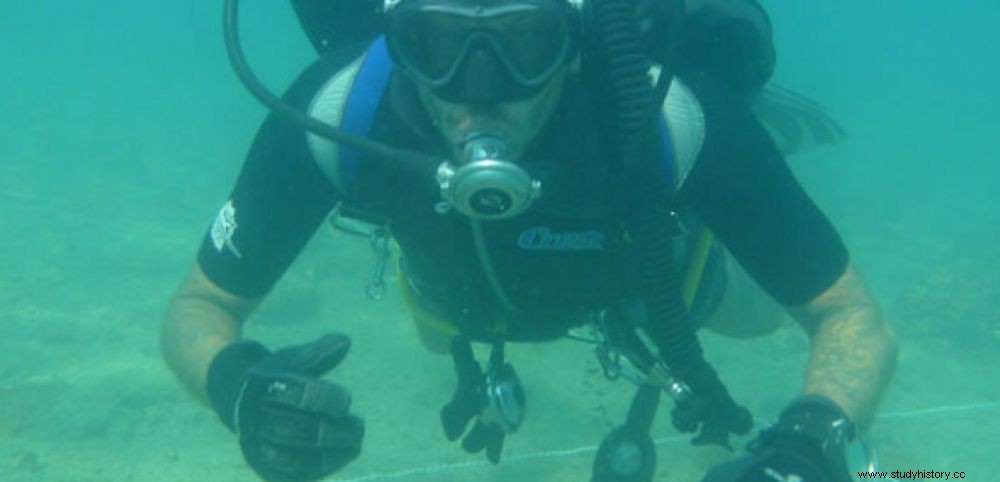 Swiss and Greek archaeologists have discovered the remains of a fortified village dating from the 3rd millennium BC .in a bay in the Peloponnese.
Swiss and Greek archaeologists have discovered the remains of a fortified village dating from the 3rd millennium BC .in a bay in the Peloponnese. CLOTHES. They had been there for millennia, just 1 to 3 meters deep, in Kiladha Bay, Argolis. The ruins of a vast coastal settlement, recently discovered on this Lambayanna beach by a Greek-Swiss team, are valuable prehistoric witnesses.
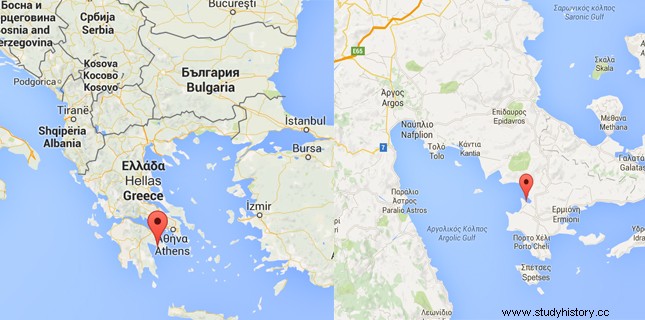
Location of Kiladha Bay, Argolis - ©Google Maps
"The importance of our discovery is partly due to the large size of the establishment:at least 1.2 hectares preserved, explains Julien Beck, lecturer at the University of Geneva and director of fieldwork,and, on the other hand, to the quantity and quality of the remains that have been collected there" . But above all, the archaeologists discovered stone defensive structures, whose "the massive character is of a kind still unknown in Greece for the period" . These excavations were carried out as part of a vast underwater archeology project launched in 2014 by researchers from the University of Geneva, under the aegis of the Swiss School of Archeology in Greece and in collaboration with the Ephoria (the Department of Underwater Antiquities of the Greek Ministry of Culture).
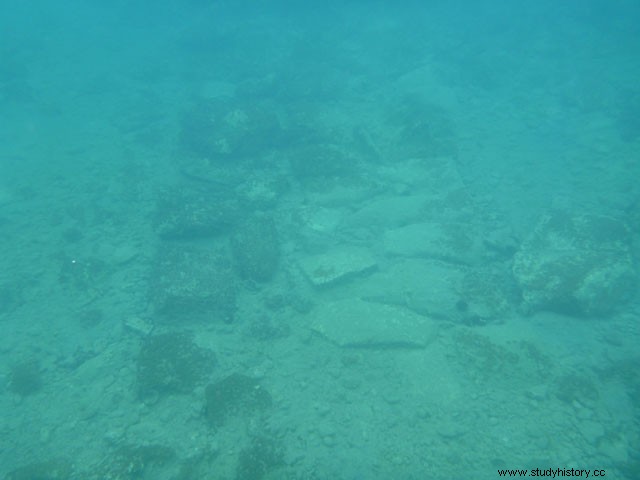
These stone foundations are those of the fortification wall of a prehistoric village discovered in Kiladha Bay, Greece -©Kiladha Bay Project
A 4,500-year-old fortified city
What does this unprecedented defensive structure look like? According to the Greek Ministry of Culture, "sections of an outer fortification wall, connected to the foundations of at least three large stone structures (18 by 10 meters) in the shape of a horseshoe, may have been identified ". These three buildings were perhaps bastions or towers, according to Julien Beck. Inside this enclosure are paved surfaces, probably streets, as well as the ruins of other, more classical buildings. this time:rectangular, circular or with an apse. "Their function seems above all domestic:it should be a question of habitat, place of storage or production ", explains the director of the excavations. "Their shape is characteristic of the Greek Bronze Age “, specifies the Greek Ministry of Culture in a press release.
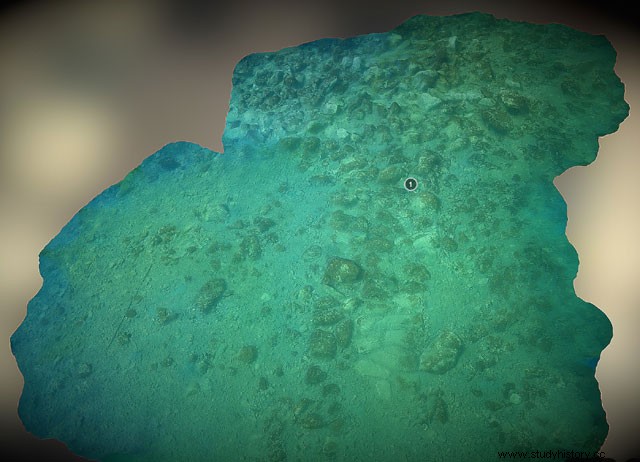
3D view of the fortification wall (1), leading to horseshoe structures - ©Achraf el Kashef
Archaic Greece
This dating according to architectural clues is corroborated by everyday objects found, by prospecting, on the seabed:characteristic of the Early Helladic II, that is to say of the half of the third millennium approximately, in what we call the period of the Early Bronze Age ", adds Julien Beck. For comparison, these remains would therefore be contemporary with the pyramids of Egypt (those on the Giza plateau were built around 2,600 - 2,500 BC), but also with the civilization of the Cyclades (3,200 to 2,000 BC), even the first Minoans, in Crete (2,700 to 1,200 BC), but they precede by almost a thousand years the first great civilization of the Greek continent, that of the Mycenaeans (1,650 to 1,100 BC). Incidentally, obsidian (a volcanic rock), used in Lambayanna for the manufacture of blades, "comes from Melos "according to Julien Beck, an island of the Cyclades archipelago populated since the 3rd millennium.
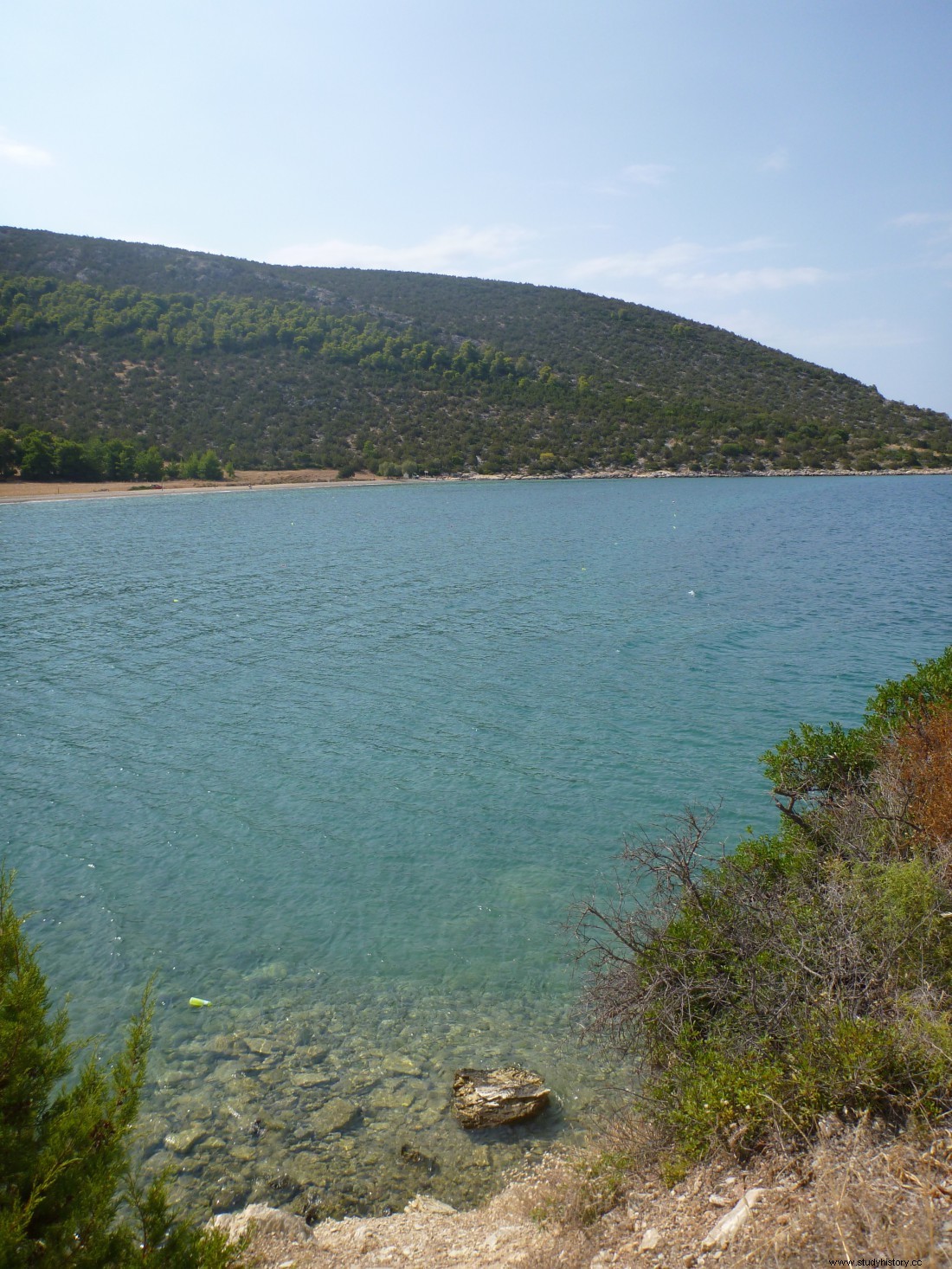
Lambayanna beach where the excavation took place - ©Kiladha Bay Project
Started in July 2015, as part of the "Kiladha Bay" project, the objective of which is to study any trace of prehistoric human activity in this bay, the excavations ended on August 14. And if they have already revealed the importance of the submerged site, some elements are missing. "There must have been brick superstructures above the stone foundations, details Julien Beck, but the chances of finding such walls under water are extremely low." Also, "the full size of the settlement is not yet known. We don't know how much of it is surrounded by fortifications" , he regrets. "Future research at Lambayanna will shed new light on a dense network of coastal settlements from the same period in the Argolic Gulf (Lerne, Tiryns, Asiné) and will serve to better understand the mode of occupation, exchanges and maritime activities in prehistory" , concludes the Greek Ministry of Culture.
